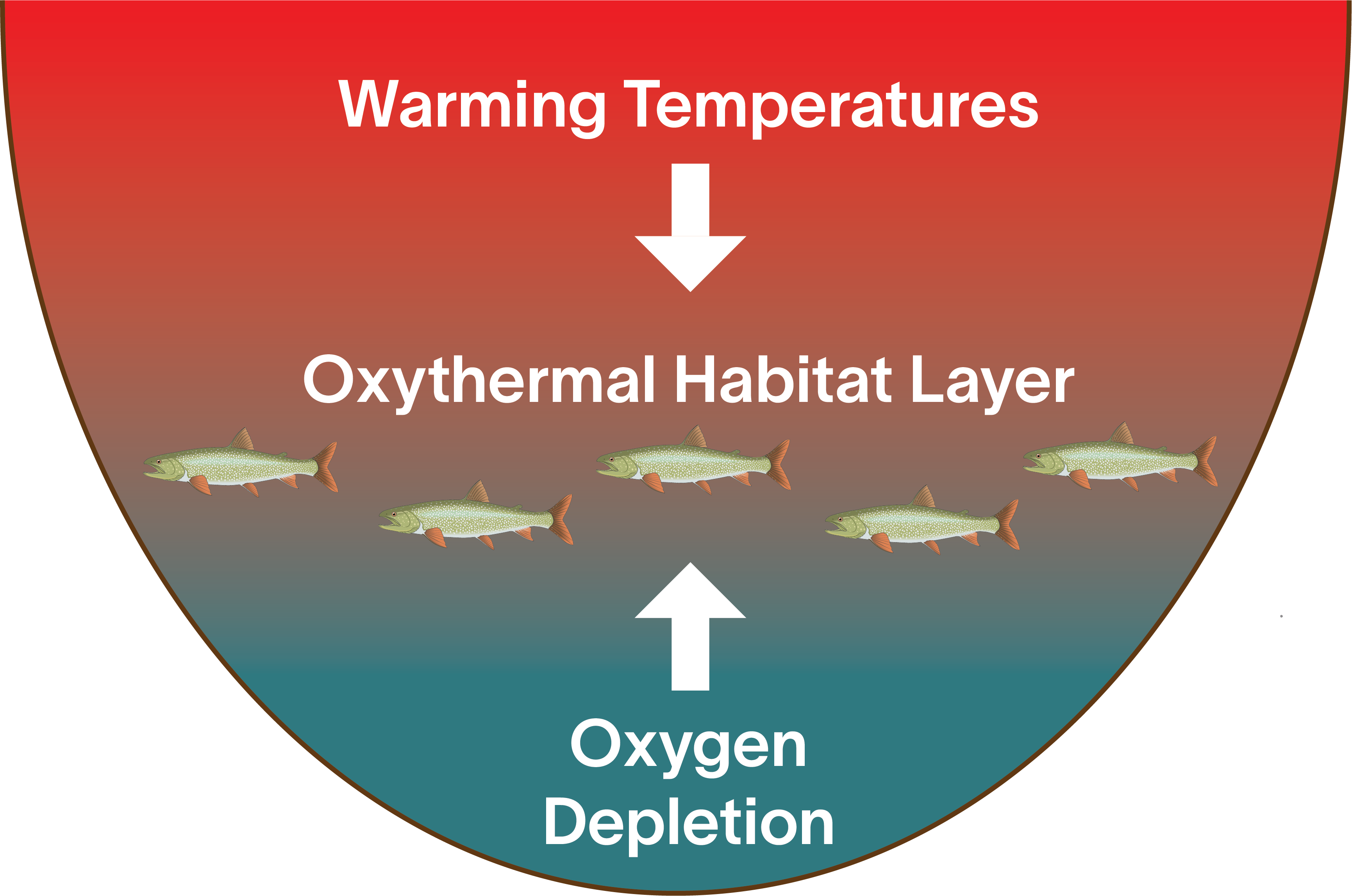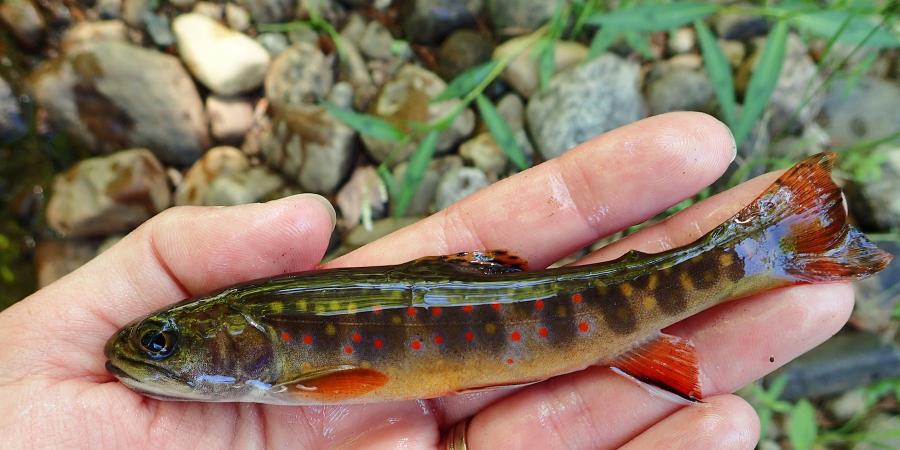Many lakes in the Adirondacks face two primary threats that impact cold-water fish, including our native salmonids—brook trout, lake trout, and whitefish. The first threat is increasing water temperature. The second is deep-water oxygen depletion.
Cold-water fish such as trout thrive in environments with high dissolved oxygen levels (typically 6 milligrams per liter or more) and cool temperatures (less than 68°F). Increased water temperature restricts the available habitat for cold-water species throughout the summer months. During summer, when deep lakes become stratified—when warm water floats on top of cold water—trout are forced to spend more time in deeper waters. However, these deeper areas often have less oxygen, making it difficult for fish to thrive.

As temperatures of Adirondack lakes and ponds rise, habitat for cold-water fish like brook trout and lake trout is disappearing. Photo credit: Ryan Hagerty/USFWS
Unfortunately, most lakes globally are experiencing warmer surface temperatures because of a warming climate. Some studies suggest that in the northeastern United States, this warming is happening at a faster rate than the global average (Karmalkar & Bradley, 2017). Preliminary data suggests that Adirondack lakes are experiencing this warming trend at a faster rate than expected. As temperatures of Adirondack lakes and ponds rise, habitat for cold-water fish like brook trout and lake trout is disappearing.
The Role of Lake Browning
In addition to rising temperatures, many lakes are experiencing a phenomenon called "lake browning," an increase in dissolved organic carbon (DOC). In aquatic ecosystems, DOC occurs from natural sources such as decomposing plant material and soil organic matter. The increase in DOC is attributed to two factors: recovery from acid deposition and the effects of a warming climate.
Acid deposition decreased as a result of the 1990 Clean Air Act Amendments. Decreases in acid deposition can lead to higher DOC, because an increase in pH increases the solubility of DOC and its ability to move from terrestrial to aquatic environments. Additionally, warming air temperatures are causing more intense rainfall and storms, which can accelerate organic matter decomposition and enhance runoff, contributing to rising DOC levels in lakes (Jane et al, 2024; Solomon et al, 2015).
Understanding how increased dissolved organic carbon can affect fish habitats is crucial. DOC absorbs sunlight, which reduces heat penetration into deeper parts of a lake. While this may be beneficial in deep, well oxygenated lakes, it can lead to warmer surface temperatures and longer periods of stratification in the medium and shallower-depth lakes more typical of the Adirondacks. This means that while browning lakes may have cooler habitats for cold-water species, the deep waters often suffer from low dissolved oxygen levels.
Support our water quality work for clean water and healthy streams. Give with confidence today!

Oxy-thermal squeeze occurs when limited oxygen near the bottom of a lake and warm temperatures near the surface squeeze fish into a narrower habitat zone.
The Future of Cold-Water Fish
The combination of rising temperatures and lake browning creates a challenging environment for fish and other aquatic biota. Warmer surface waters extend the time lakes remain thermally stratified. During this period, oxygen-rich surface waters sit on top of oxygen-depleted deep waters, which can lead to "dead zones" where fish struggle to survive. Scientists have begun referring to this as oxy-thermal squeeze, since the limited oxygen near the bottom and warm temperatures near the surface squeeze fish into a narrower habitat zone.
Fish can sometimes survive outside the conditions that make a habitat suitable, but doing so causes stress. Stress impacts their feeding, metabolism, growth, and ability to reproduce. If fish struggle to reproduce over several years, their populations may decline significantly. In some cases, lake ecosystems offer enough habitat variability that some areas could provide safe spots for fish during hot temperatures or low oxygen levels.
The challenges facing cold-water fish in the Adirondacks and the rest of the Northern Forest are many, and the magnitude of these threats to Adirondack lakes remains unclear. This underscores the urgent need to research and then work to protect and restore these vital ecosystems. Thanks to the SCALE project, the Adirondacks will, once again, serve as a laboratory for understanding lakes throughout the state, our region, and beyond. Through SCALE, we'll work to understand how fish habitats are changing throughout Adirondack lakes. The resulting data will provide a baseline for the Ausable Freshwater Center and others to understand how best to manage and protect Adirondack lakes.
Story by Carrie Pershyn and Liz Metzger, Biodiverse Habitats Program
Sign-up for our e-newsletter to get weekly updates on the latest stories from the Ausable Freshwater Center.


